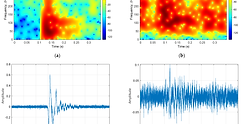Recent Publications
Aug 14, 2025
Assessing red hind (Epinephelus guttatus) spawning aggregation changes from long-term relative variations in call types associated with reproductive behaviors
Fish spawning aggregations (FSAs) are elevated concentrations of conspecific fish, often predictable in time and space, that gather for the main purpose of reproduction. For some grouper species, distinct courtship sounds are associated with specific reproductive behaviors, and this association has yet to be elucidated. If known, long-term trends in courtship sounds can thus be used as indicators of change in spawning aggregations. Red hind (Epinephelus guttatus) form spawning aggregations annually at recurring locations and times. Red hind have the ability to produce four distinct types of sounds (labeled RH1–4) that are most commonly heard during FSAs. Of these courtship-associated sounds (CAS), mostly two, produced by males, are used during courtship displays toward gravid females (RH1) and territorial/harem defense with other males (RH2), respectively. To elucidate the role of these two CAS in the red hind reproductive behaviors we analyzed the evolution of the partitioning between RH1 and RH2 call types in acoustic recordings spanning 12 years of spawning seasons, between 2011 and 2022 at a Caribbean FSA, off western Puerto-Rico. The relative temporal variations of call types were linked to the dynamics of the spawning population and suggests that daily to hourly variations in call numbers are linked to changes in sex ratios associated with egress and ingress from and to the spawning site, respectively. Specifically, RH2 was the most common call type during FSA. However, RH1 call type numbers peaked at the time of presumed spawning, while RH2 call type numbers decreased, confirming RH1 association with courtship display toward a female or a harem. At the interannual scale, the evolution of the relative variation of the two call types suggests either a significant change in the sex ratio tending toward a male dominated population or a spatial shift of the spawning site away from the location of the acoustic recorder. Understanding the relative role of call types and monitoring the relative variations of call type numbers in the reproductive dynamics of socially structured populations enables the understanding of potential changes in a spawning aggregation over time that could result from fishing pressure or environmental changes.
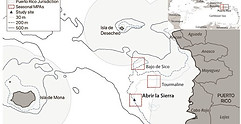
Sept 20, 2024
Ocean Currents Velocity Hindcast and Forecast Bias Correction Using a Deep-Learning Approach
Today’s prediction of ocean dynamics relies on numerical models. However, numerical models are often unable to accurately model and predict real ocean dynamics, leading to a lack of fulfillment of a range of services that require reliable predictions at various temporal and spatial scales. Indeed, a numerical model cannot fully resolve all the physical processes in the ocean due to various reasons, including biases in the initial field and calculation errors in the numerical solution of the model. Thus, bias-correcting methods have become crucial to improve the dynamical accuracy of numerical model predictions. In this study, we present a machine learning-based three-dimensional velocity bias correction method derived from historical observations that applies to both hindcast and forecast. Our approach is based on the modification of an existing deep learning model, called U-Net, designed specifically for image segmentation analysis in the biomedical field. U-Net was modified to create a Transform Model that retains the temporal and spatial evolution of the differences between the model and observations to produce a correction in the form of regression weights that evolves spatially and temporally with the model both forward and backward in time, beyond the observation period. Using daily ocean current observations from a 2.5-year current meter array deployment, we show that significant bias corrections can be conducted up to 50 days pre- or post-observations. Using a 3-year-long virtual array, valid bias corrections can be conducted for up to one year.
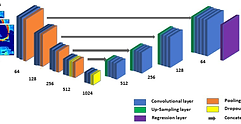
Apr 4, 2025
Autonomous wave gliders as a tool to characterize delphinid habitats along the Florida Atlantic coast
As climate change and anthropogenic activities continue to impact cetacean species, it becomes increasingly urgent to efficiently monitor cetacean populations. Continuing technological advances enable innovative research methodologies which broaden monitoring approaches. In our study, we utilized an autonomous wave glider equipped with acoustic and environmental sensors to assess delphinid species presence on the east Florida shelf and compared this approach with traditional marine mammal monitoring methods. Acoustic recordings were analyzed to detect delphinid presence along the glider track in conjunction with subsurface environmental variables such as temperature, salinity, current velocity, and chlorophyll-a concentration. Additionally, occurrences of soniferous fish and anthropogenic noise were also documented. These in-situ variables were incorporated into generalized additive models (GAMs) to identify predictors of delphinid presence. The top-performing GAM found that location, sound pressure level (SPL), temperature, and chlorophyll-a concentration explained 50.8% of the deviance in the dataset. The use of satellite environmental variables with the absence of acoustic variables found that location, derived current speed and heading, and chlorophyll-a explained 44.8% of deviance in the dataset. Our research reveals the explanatory power of acoustic variables, measurable with autonomous platforms such as wave gliders, in delphinid presence drivers and habitat characterization.
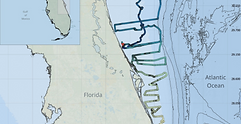
July 21, 2024
Fish Acoustic Detection Algorithm Research: a deep learning app for Caribbean grouper calls detection and call types classification
In this paper, we present the first machine learning package developed specifically for fish calls identification within a specific range (0–500Hz) that encompasses four Caribbean grouper species: red hind (E. guttatus), Nassau (E. striatus), yellowfin (M. venenosa), and black (M. bonaci). Because of their ubiquity in the soundscape of the grouper’s habitat, squirrelfish (Holocentrus spp.) sounds along with vessel noise are also detected. In addition the model is also able to separate grouper species call types. This package called FADAR, the Fish Acoustic Detection Algorithm Research is a standalone user-friendly application developed in Matlab™. The concept of FADAR is the product of the evaluation of various deep learning architectures that have been presented in a series of published articles. FADAR is composed of a main algorithm that can detect all species calls including their call types. The architecture of this model is based on an ensemble approach where a bank of five CNNs with randomly assigned hyperparameters are used to form an ensemble of classifiers. The outputs of all five CNNs are combined by a fusion process for decision making. At the species level, the output of the multimodel is thus used to classify the calls in terms of their types. This is done by species specific deep learning models that have been thoroughly evaluated in the literature on the species concerned here, including transfer learning for red hind and yellowfin groupers and custom designed CNN for Nassau grouper, which has a greater number of known call types than the other species. FADAR was manually trained on a diversity of data that span various regions of the Caribbean Sea and also two recorder brands, hydrophone sensitivities, calibrations and sampling rates, including a mobile platform. This strategy has conferred FADAR substantive robustness to a diversity of noise level and sources that can be found in the grouper calls frequency band such as vessels and marine mammals. Performance metrics based on sensitivity (recall) and specificity showed the same performance level for both balanced and unbalanced datasets and at locations not used in the training set.
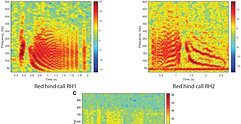
Oct, 2023
Spatial distribution of spawning groupers on a Caribbean reef from an autonomous surface platform
Many commercially important groupers (Epinephelidae) form fish spawning aggregations (FSA) at specific sites where the spawning stock is concentrated to spawn within a couple of months each year. The concentrated nature and short duration of these FSAs render these species susceptible to fishing pressure leading to their disappearance or decrease in the number of spawning fish. As a result of directed fishing during FSAs many large-bodied groupers are now International Union for Conservation of Nature (IUCN) Red-listed. Puerto Rico within the US Caribbean is where protective measures have been designated for the recovery of grouper species that aggregate to spawn, in particular the threatened (Endangered Species Act) Nassau grouper (Epinephelus striatus) and sustainability of the red hind (Epinephelus guttatus). The regulations at three marine managed areas (MMAs) off the west coast of Puerto Rico, have been focused on reproductive seasons, through seasonal closures. However, these management zone boundaries may fail to fully encompass fish migration paths and temporal variability in FSAs, exposing threatened species like the Nassau grouper to incidental fishing and poaching. In addition to traditional methods used to study FSAs, passive acoustics represent a relatively new approach to assess the presence and spatio-temporal distribution of aggregating species. Sound production is common among many fishes, including the Nassau and red hind groupers, and is most often associated with courtship and spawning behavior. In this study, we present the results from the deployment of an autonomous surface vehicle equipped with a passive acoustic monitoring system along the insular shelf break that surveyed the MMAs during their peak spawning season. Our observations suggest that known FSA sites are critical habitat for both species and the existence of potential, previously unknown FSAs for multiple grouper species as well, highlighting the importance of spatial and temporal expansion of existing regulations.

Apr 10, 2023
Detection and localization of Goliath grouper using their low-frequency pulse sounds
The goal of this paper is to implement and deploy an automated detector and localization model to locate underwater marine organisms using their low-frequency pulse sounds. This model is based on time difference of arrival (TDOA) and uses a two-stage approach, first, to identify the sound and, second, to localize it. In the first stage, an adaptive matched filter (MF) is designed and implemented to detect and determine the timing of the sound pulses recorded by the hydrophones. The adaptive MF measures the signal and noise levels to determine an adaptive threshold for the pulse detection. In the second stage, the detected sound pulses are fed to a TDOA localization algorithm to compute the locations of the sound source. Despite the uncertainties stemming from various factors that might cause errors in position estimates, it is shown that the errors in source locations are within the dimensions of the array. Further, our method was applied to the localization of Goliath grouper pulse-like calls from a six-hydrophone array. It was revealed that the intrinsic error of the model was about 2 m for an array spanned over 50 m. This method can be used to automatically process large amount of acoustic data and provide a precise description of small scale movements of marine organisms that produce low-frequency sound pulses.
_edited.jpg)
Jun 1, 2023
Seasonal Dynamics and Environmental Drivers of Goliath Grouper (Epinephelus itajara) Sound Production
The Goliath groupers are known to produce characteristic low frequency vocalizations (“calls”) during spawning aggregations and as part of territorial behavior. Acoustic monitoring for Goliath grouper calls around Florida has historically occurred between July and December to capture the spawning season, with a particular focus on August–November. Because of the unique waveform of the Goliath grouper call, we implemented a noise adaptive matched filter to automatically detect Goliath grouper calls from year-round passive acoustic recordings at two wrecks off Florida’s Gulf of Mexico coast. We investigated diel, temporal and environmental factors that could influence call rates throughout the year. Call rates peaked in August, around 0300 EST and just after the full moon. The Goliath groupers were more vocal when background noise was between 70 and 110 dB re 1 µPa. An additional smaller peak in call rates was identified in May, outside of the typical recording period, suggesting there may be other stimuli besides spawning that are eliciting high sound production in this species. Goliath grouper sound production was present year-round, indicative of consistent communication between individuals outside the spawning season.
